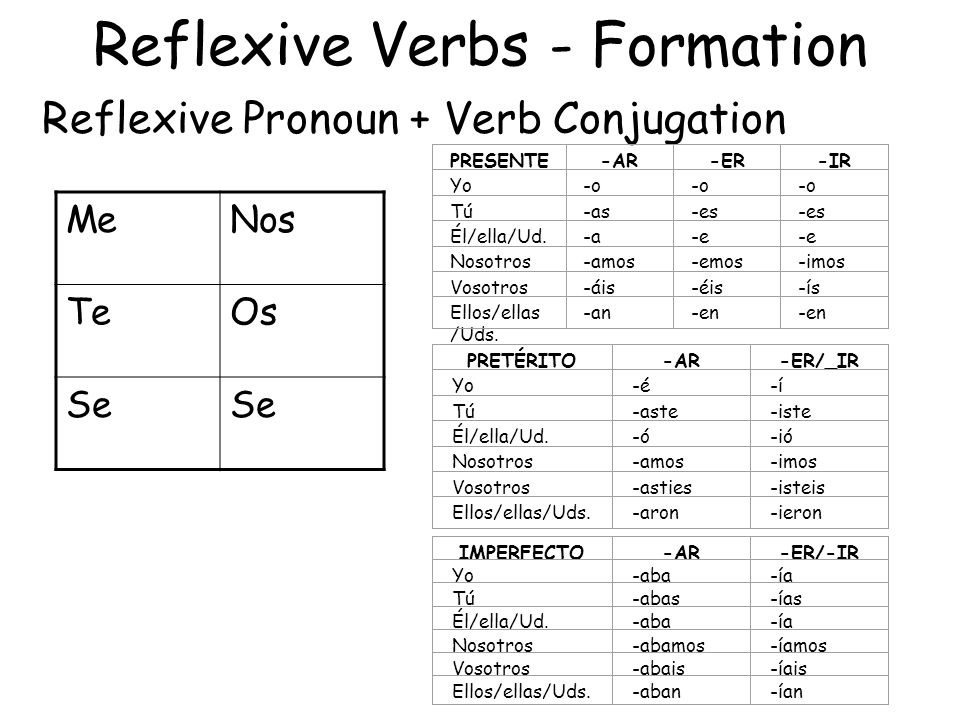
If the infinitive verb you want to use has an -er or -ir suffix, you should replace this with -ido.Ĭheck the table below to see how this works with some examples. It is very important therefore to use the grammar tables frequently. For starters, we need to find the correct stem to use to add our imperfect. In addition to this, the endings of subjunctive verbs can alter across the conjugations. If the infinitive verb you want to use has an -ar suffix, you should replace this with -ado to form the past participle verb. Course 24K views The Imperfect Subjunctive Forming the imperfect subjunctive tense can be a bit tricky. Remembering the required suffixes to form participle verbs for the preterito perfecto de subjuntivo is key.Ī participle verb will end in -ado or -ido depending on the ending of the infinitive verb form. We use the Present Subjunctive in certain types of sentences that express subjectivity: desire, doubt, emotion. Forming participle verbs for the preterito perfecto de subjuntivo
SUBJUNCTIVE TENSE SPANISH ENDINGS HOW TO
If “we” is the subject of the subordinate clause, use hayamos.Īs you must use these verbs before a participle verb to form the preterito perfecto de subjuntivo, look at the section below to learn how to form participle verbs. You should use the correctly conjugated form of the verb haber before the second verb in the compound subjunctive.įor instance, if “he” or “she” is the subject of the subordinate clause, use haya. Let’s now look at a verb table to see how to conjugate imperfect Spanish subjunctive verbs in more detail. The lack of the accent mark distinguishes it from the third-person future tense verb hablará (meaning he, she, or it will speak). NOTE - hablara, as the imperfect subjunctive verb, does not feature an accent mark over the final -a. What you should end up with is the verb hablara. Next, take the verb hablaron, remove the -on from the suffix, and replace it with the letter -a. The verb you should have in your mind is hablaron. To create the imperfect subjunctive form of the verb hablar begin by thinking back to its preterite ( simple past tense) conjunctions and call to mind the third-person conjugation of this verb. The easiest way to understand this is with an example, so empecemos! (Let’s make a start!) Start by calling to mind the third-person preterite version of the regular verb you need to conjugate and then replace the -on with an -a. There’s an easy way to remember how to conjugate the imperfect Spanish subjunctive verbs (regular ones). How do you conjugate imperfect Spanish subjunctive verbs? In the second example, the verb gustar is in the imperfect past tense, which requires us to use the imperfect Spanish subjunctive verb tuvieras.

In the first example, the verb gustar is in the present tense, which requires us to use the present subjunctive verb tengas in the second half of the sentence. The subjunctive is used to express desires, doubts, wishes, conjectures, emotions, and possibilities. The first verbs in the first and second halves of these sentences are different. Conjugation Sign in All Lessons Spanish Subjunctive Start first lesson RELEVANT LESSONS: Explanation The subjunctive ( elsubjuntivo) is one of the three moods in Spanish, the other two being the indicative and the imperative. The imperative mood is used for commands.The main difference between these examples is the tense. It just happens that the conjugation models. Once you have the subjunctive stem, then you add the ending: The Spanish subjunctive mood has six verb tenses, while the Imperative mood has only one (the present tense). Here are three useful tables to quickly reference the common verb endings used in the present subjuctive mood.


Of course, there are a few irregularities: Verbs ending in -er or ir in the subjunctive like vender or vivir, change their endings to -a.

To make the subjunctive tense, take the yo form of the verb (remember all of those first-person irregularities) and remove the final -o. No similar tense exists in English, so you'll have to memorize when to use it. The subjunctive mood in Spanish is used for indirect speech ("John told me I was late") as well as uncertainty about a fact ("I doubt there's any pizza left").


 0 kommentar(er)
0 kommentar(er)
